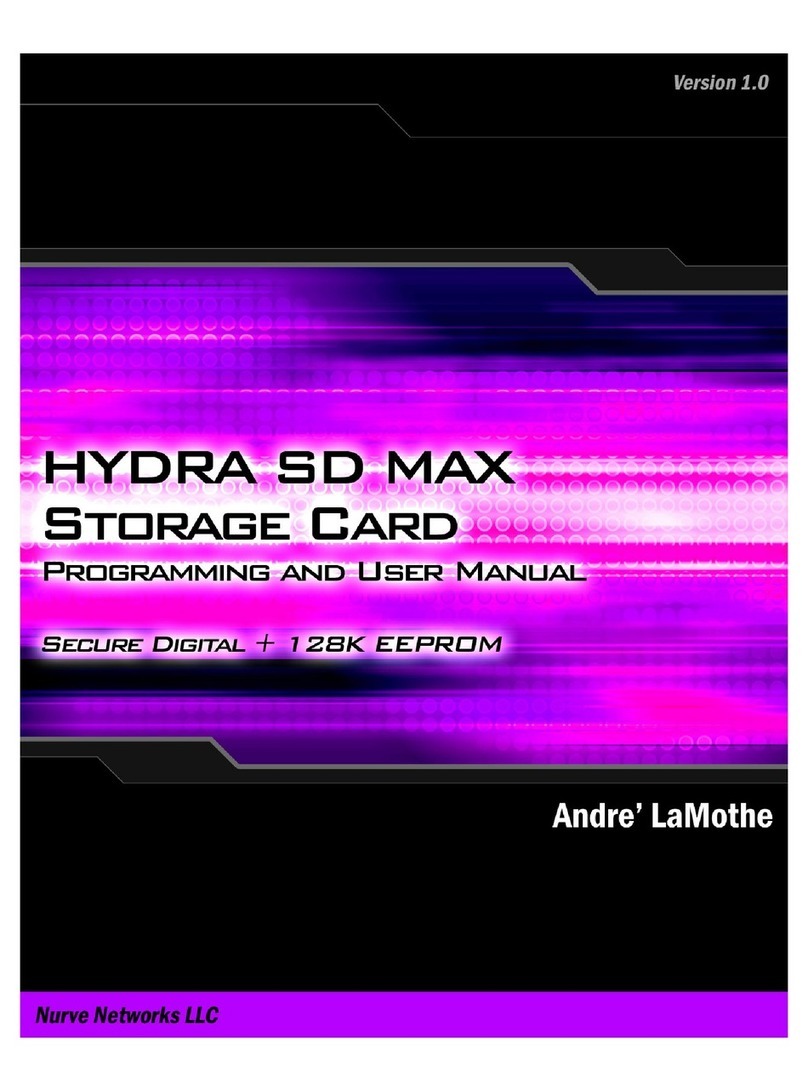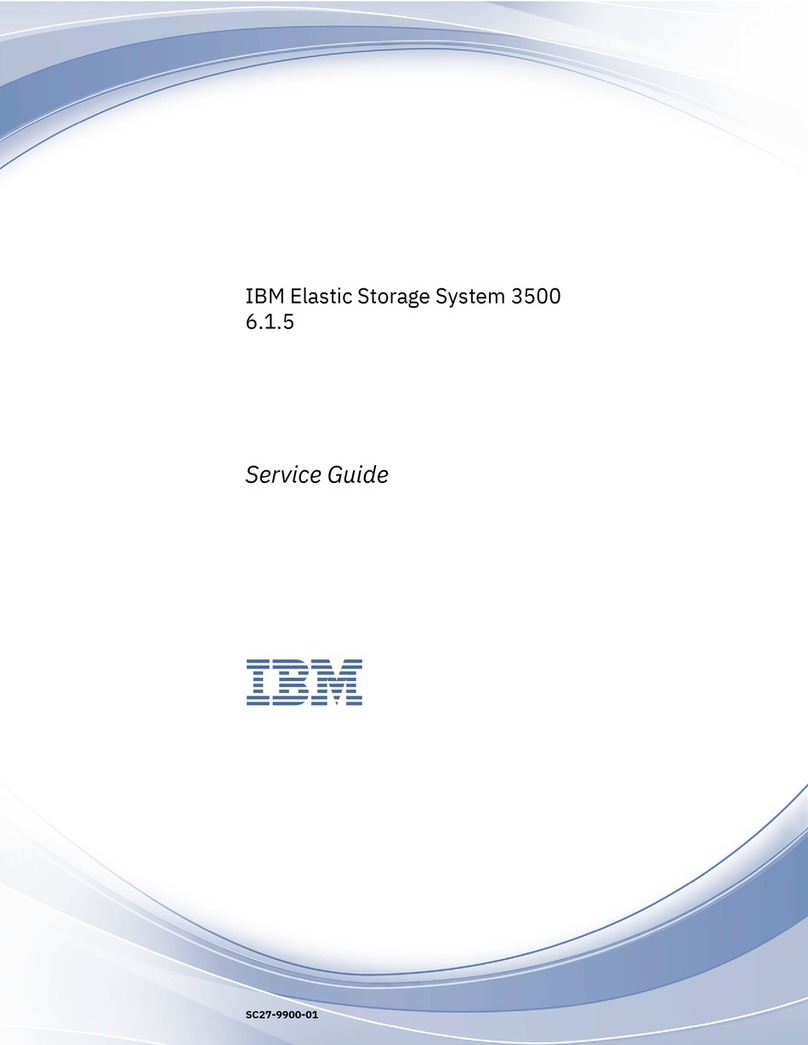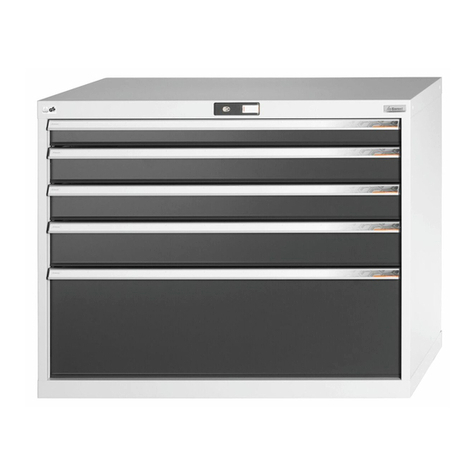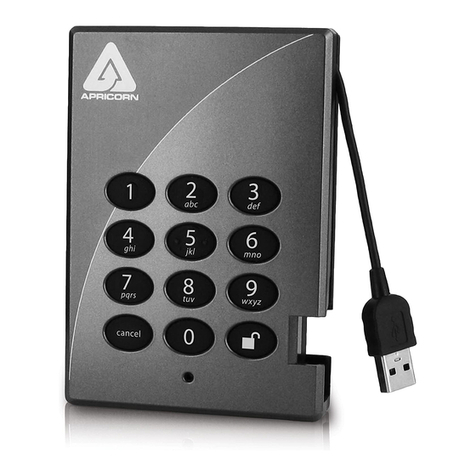Olivetti DE 520 Series User manual

DE
520
SYSTEM
and
Magnetic
Tapes
9 -M t
t
fs^
l ^
i p
lU
r
/J
tA
J s ^ «
l!
r
I!
:l
i!
i'-'
The
Centre
for
Computing
History
www.ConiputingHistofy.org.uk
^n\^7i I ?
?n
I*''
:
?/
f.\
'•'i
: -,r_
•:„
•-

THE
DE
520
SYSTEM
AND
MAGNETIC
TAPES
C'
c
Produced
by
I
DP
Software
British
Olivetti
Limited
30
Berkeley
Square
London
W1X
6AH

!
PREFACE
; _ ;}
This
manual
explains
the
functions
of the
two
magnetic
tape
options
on the
DE
520
System:
1Magnetic Tape Cassette Option
2 Computer Compatible Tape Option
The
manual
is
split
into
two
sections.
The
first
section,
Cassettes
System,
details
the
operations
that
can
apply
to
both
cassette
and
computer
tape
options.
The
second
section,
Computer
Magnetic
Tape,
details the
differences
in
operation
for
computer
compatible
tape
applications.

CONTENTS
Page
Preface
'
Contents
1
Introduction 2
THE DE 523 AND
CASSETTES
SYSTEM 4
Cassette
Handling 4
Size of
Cassette
Tape
4
Record Handling Techniques 4
Read
4
Read Errors (Parity) 5
F?ead
Errors
(Overflow)
5
Equipment
Errors
5
Backspace 5
Write 5
Write Errors (Parity) 5
Write Errors (Equipment) 5
Write File 6
Rewind 6
TERMINAL OPERATION 7
Selecting and Processing 7
Manual Control 7
OPERATIONAL MODES USING CASSETTES 8
Free-Form Mode 8
Enter Mode 9
Verify
Mode
9
Search
Under
Batch
Mode
"JO
Error
Messages
THE DE 523 AND COMPUTER MAGNETIC TAPE 14
Introduction "'4
TAPE OPERATIONS 15
Read
"IS
Backspace 15
Write "'S
Write File 15
Rewind 15
Insert 15
TERMINAL
OPERATION 16
Selection and Processing 16
Operational
Modes
using
the
Computer
Tape 16
Free-Form Mode 16
Enter Mode 16
Verify
Mode
17
Batch Mode ''7
Tape Errors 17
Appendix
A
Tape
Error
Messages
B
International:
ASCII-BCD
Conversion
Table
C
International:
ASCII-EBCDIC
Conversion
Table
DTypical Computer Tape Format on
the
DE 520 System
Figures 1 Beginning-of-Tape &
End-of-Tape
Areas 12
2 Nominal Record (Cassettes) 12
3 Recording Bit Pattern 13
1.

INTRODUCTION
The
central
unit of
the
Olivetti DE 520
System
is
equipped
with
cassette
recorders.
The
standard
DE 521
has
one
cassette
recorder,
the
DE
523
has
two.
The
DE 521
has
the
option of a
second
cassette.
Cassette
recorders
can
be
assigned
for
either
Input or
Output
operations.
There
are
two
recording
tracks
on
the
cassette
magnetic
tape,
one
track
for
data
and
the
other
for a bit parity
check.
Two
possible
inter-record
gap
sizes
are
available: 0.75 inch
and
1.5 inch (CRR-IB compatible). The 0.75 inch ihter-record
gap
is
standard
on
the
DE
520
System,
the
1.5 inch
inter-record
gap
is
optional.
Data
is
recorded
using
the
extended
ISO/USASCII
Code
(7+ 1+ 1 bits).
The recording density is 800 bpi
(80
characters). Read/Write speed is 12.5'ips, with a
rewind
speed
of
120
ips.
Each
cassette
tape
is 280 feet (90 metres) in length;
the
effective
capacity
being 1,000-
2,000 records depending on record size, 216-80 characters respectively and the size of
inter-record
gaps.

CRT.
BRILLIANCE
CONTROL
lii-
I'
I
^:•--;
ji j
. i,h
IIIIIHIIIll
ll
,-. 'U
'it
lo
•
.:il=
A,Y^%^V*rV'¥'iV\'
'I'M'
4 f ? ? f f.
?.Xj'.
j,,j
ii,/f
*
•TONE
CONTROL
ON/OFF
SWITCH
RESET
BUTTON


THE
DE
523
AND
CASSETTES
SYSTEM
CASSETTE
HANDLING
It should be noted
that
the
correct
handling of
cassettes
is of prime importance.
To
insert
the
cassette
into
its
compartment:
1. Open the compartment door by pressing the catch downwards.
2. Insert the cassette into the compartment by holding the top and bottom of the
»cassette between the index finger and thumb (see photograph opposite). Special
care
should
be
taken
not to
handle
the
exposed
part of
the
magnetic
tape.
3. Slot the cassette into the compartment by inserting the right edge slightly ahead
of
the
left
edge
(see
photograph
opposite).
4.
Close
the
compartment
door.
To
remove
the
cassette
from
its
compartment:
1.
Open
the compartment door
by
pressing the catch
downwards.
2.
Hold
the top and
bottom
of the cassette and
move
it slightly to the right before
removal. The left
edge
of the
cassette
should be withdrawn first.
NOTE:
AT
ALL
TIMES THE CASSETTES MUST BE
REWOUND
PRIOR TO THEIR
REMOVAL.
SIZE
OF
CASSETTE
TAPE
The cassette tape is
280
feet
(90
metres)
long
with
the effective capacity of each
cassette consisting of 1.000-2.000 records depending on record size,
216-80
characters
respectively,
and
the
size of inter-record
gaps.
RECORD
HANDLING
TECHNIQUES
I
The
cassette
recorder
feature
provides
the
terminal
with
the
ability
to
read,
write,
I ^
backspace,
insert,
write
file
marks,
and
rewind
cassette
tapes.
The
operations,
I
'W
themselves,
can
be
performed
under
the
control
of
format
programs
provided
with
the
I
cassette
system.
Sincc
the
recorders
share
the
same
interface,
it
is
not
possible
to
I
overlap
operations
on
the
first
recorder
with
those
of
the
second
recorder.
It
is,
however,
I
possible
to
overlap
cassette
input/output
operations
with
other
peripheral
operations,
i
providing
the
terminal's
overlap
rules
are
satisfied
(see
DE
520
General
Manual,
V
pSiQQ
14).
I
4
5
^
READ
The Read operation reads the next available record
from
the selected cassette into the
buffer specified by the terminal control.
If
the "Clear Leader" is detected prior to the
initiationof the read operation the cassette recorder assumes that it is at the beginning-
of-tape
(BOT),
and advances the tape
beyond
the Clear
Leader.
If
Clear Leader is
detected during a read operation the cassette recorder assumes it is at the end-of-tape
(EOT),
the tape is retarded
0.25
inches
from
the Clear Leader and the read operation
terrninales
with
the
message
EOT
displayed
on
the
screen.

READ
ERRORS
(PARITY)
When a parity error
has
occurred
there
are
three
further attempts to read the record from
the
cassette,
this
is
achieved
by
backspacing
over
the
error
record
and
re-reading
it. If
the
fourth attempt to read
the
record is
unsuccessful
the
first
character
in
the
record
is
replaced
by
the
@
character
and
the
read
error
message
RD
appears
on
the
screen.
IT
SHOULD
BE NOTED THAT
THE
DATA FROM
THE
ERROR
RECORD
IS
STORED
IN
THE
SPECIFIED
INPUT
BUFFER.
READ
ERRORS
(OVERFLOW)
When a
record
containing
more
than
216
characters
is read, all
the
data
after
the
216th
character
is "lost". Parity is
checked
on
the
entire record
and
there
is no
screen
message
for overflow
conditions.
EQUIPMENT
ERRORS
If at any time during aread operation
the
cassette
recorder
is found to be non-
operational,
the
operation is terminated
and
an error
message
displayed on
the
screen.
(See
Cassette
Recorder Messages,
page
11, for appropriate action).
BACKSPACE
The
backspace
operation moves the
selected
cassette
tape
back
one
record. Ifthe Clear
Leader
is
detected
the
operation
is
terminated
without an
error
indication. If
the
cassette
recorder is non-operational the operation is terminated without an error indication.
WRITE
The Write operation
transfers
the
data
in
the
specified
buffe*
onto
the
selected
cassette
tape. The DE
backspaces
the record, and reads it at reduced sensitivity to check the
parity of the record. Ifthe Clear Leader is detected prior to the Write operation the DE
assumes
that
it is at
the
beginning-of-tape
(BOT)
and
the
tape
is
erased
until it is 3.5
inches beyond the Clear Leader. When the Clear Leader is detected during a Write
operation
the
DEassumes that it is at the end-of-tape
(EOT);
the
cassette
is backspaced
0.25
inch
from
the
Clear
Leader
and
the
operation
is
terminated
with
the
EOT
message
displayed
on
the
screesi.
WRITE
ERRORS
(PARITY)
When a parity error is detected the record is backspaced and 3.5 inches of tape erased,
the DE then performs the Write operation. This
process
is repeated until the Write
operation
is
completed
successfully.
WRITE
ERRORS
(EQUIPMENT)
If
the
cassette
is pi'otected from Write operations, by
the
physical removal of
the
plastic
insert
at
the
edge
of a
cassette,
the
Write
cporatior.
is
not
performed
and
an
error
message
displayed on
the
screen.
(See
Cassette
Recorder
Messages,
page
11, for
appropriate
action).

WRITE
FILE
The
Write
File
operation
writes
an
end-of-file
mark
consisting of
3.5
inches of tape
erased
followed
by
a singlecharacter
record
containing the
FS
character.The
record
is
written without an LRC.
The
rules
governing
Clear
Leader,
protected
cassettes,
non-
operational recorders and
parity
error are identical to the Read operation.
REWIND
The
Rewind
operation
rewinds
the selected cassette tape
until
the beginning-of-tape
(BOT)
Clear
Leader
is sensed.
If
thetape is
positioned
on a
Clear
Leader
at the
time
the
operation
is
initiated
the
Rewind
function
is
not
performed.
It
is
not
possible
to
rewind
a
cassette positioned at
EOT
and on the Clear
Leader.
This
operation is
similar
to the
Read and
Write
operations in that it
follows
the convention of backspacing away
from
EOT
thus
making
the
rewind operation possible.

TERMINAL
OPERATION
SELECTING
AND
PROCESSING
When
the
terminal
is
provided
with
the
Cassette
Recorder
feature
the
cassette
recorders
may
be
selected
as
normal
terminal
inputs
and
outputs
during
I/O
assignment.
The
following
device
identification
codes
are
reserved
to
identify
the
cassette
recorder
compartment
positions.
device
code
1
2
function
Select
left-hand
cassette
recorder
Select
right-hand
cassette
recorder
Entering
these
identification
codes
on
the
status
line
results
in
the
specified
cassette
recorder
being
selected
as
a
source
of,
or
destination
for,
data
during
the
terminal's
normal
course
of
operation.
If
the
terminal
has
not
been
provided
with
a
second
cassette
recorder
compartment
(standard
DE 521),
and
it is
selected,
then
the
operation
results
in
an
EQP
error
being
displayed
on
the
screen.
The
direction
of
data
transfer
is
determined
by
whether
the
specified
recorder
has
been
assigned
as
an input
or
an
output
device.
It
should
be
noted
that
format
programs,
if
used,
are
usually
stored
on
one
of
the
two
cassettes.
This
cassette
is
therefore
encoded
as
the
format
device
in
the
assignment
code.
MANUAL
CONTROL
Manual
control
of
cassette
recorder
operations
is
possible
through
the
use
of
the
Device
Operation
keys.
The
functions
of
these
keys
are
as
follows:
key
function
Adv
Red
Loads
the
input
buffer
into
the
output
buffer,
clears
the
input
buffer
and
reads
the
next
record
from
the
selected
cassette
into
the
input
buffer.
Back
Red
Backspaces
the
selected
cassette
tape
one
record.
Write
Loads
the
input
buffer
into
the
output
buffer,
clears
the
input
buffer
and
write
the
contents
of
the
output
buffer
onto
the
selected
cassette
tape.
Insert
Loads
the
input
buffer
into
the
output
buffer,
clears
the
input
buffer
and
inserts
the
contents
of
the
output
buffer
onto
the
selected
cassette
tape.
The
insert
operation
is
performed
by
backspacing
the
selected
cassette
•
and
writing
the
output
buffer
onto
it.
CARE
MUST BE TAKEN TO
ENSURE
THAT
THE
LENGTH
OF
INSERTED
RECORD
DOES
NOT
DIFFER
FROM
THAT
OF
THE
ORIGINAL
RECORD.
Write
File
Writes
FS
onto
the
selected
casseite
tape.
Rew
Rewinds
the
selected
cassette
tape.

message
RD
EOF
EOT
EOT
EQP
EQP
EQP
APPENDIX
A
TAPE
ERROR
MESSAGES
meaning
A
read
error
has
been
en
countered
in
the
process
of in
putting
data
from
the
computer
tape.
An
end-of-file
mark
has
been
read
on
the
computer
tape.
The
end-of-tape
mark
has
been
read
while
inputting
from
the
computer
tape.
The
end-of-tape
mark
has
been
read
while
outputting
to
the
com
puter
tape.
An
attempt
to
perform
a
tape
operation
has
been
made
and
the
transport
is
non-operational.
An
attempt
to
insert
onto
the
computer
tape
has
been
made.
An
attempt
has
been
made
to
perform an output operation to a
protected
tape.
corrective
action
(1) To
accept
record-depress
the
Error
Reset
key.
(2) To
re-read
record
-
depress
Back
Red,
Adv
Red
and
Error
Reset
keys.
(3) To skip record -
depress
Adv
Red
key.
(1) To
process
EOF mark to
out
puts-depress
the
Error
Reset
key.
(2) To
skip
into
the
next
file-depress
the
Adv Red
and
Error
Reset
keys.
Depress
the
Rew key,
load
a
new
tape,
depress
Adv Red
and
Error
Reset
keys
to
continue.
Depress
the
Rew key, load a
new
tape,
depress
Write
and
Error
Reset
keys
to
continue.
Make
the
transport
ready,
depress
the
appropriate
Device
Operation
key
and
the
Error
Reset
key to
repeat
the
tape
operation.
No
corrective
action
possible.
Remove
the
tape,
provide
the
ring (removed to
effect
protec
tion)
and
restart
operation
from
the
beginning.

z
»
Data
Record
Four
Character
Spaces
Cyclic
Redundancy
Check
(CRC)
Character
APPENDIX
D
TYPICAL
COMPUTER
TAPE
FORMAT
ON
THE
DE
523
SYSTEM
Forward
tape
motion
N.B. (i) For
an
End-of-Tape
Record,
no
CRC
is
present.
(ii) With a
7-track
tape,
no CRC is
present.
z
,
Inter
Record
Gap
.
.Longitudinal
Redundancy
Check
(LRC)
Character
.Four
Character
Spaces

OPERATIONAL
MODES
USING
CASSETTES
FREE-FORM
MODE
Jhis
is the mode in which assignment
codes
are set-up via the keyboard. If set-up
as
follows:
* 1 _ _ _ * (each _ indicating a space)
the
cassette
recorder
in
position
1 is
assigned
as
a FMAT
device,
and
format
programs
and
descriptions
can
be
written
onto
the
cassette
via
the
keyboard
and
the
device
oiDeration
keys;
these
keys
also
allow
the
retrieval
of
formats
or
descriptions
from
the
cassette
into
the
buffer
where
any
necessary
corrections
can
be
made.
The
formats
or
descriptions
can
then
be
written
back
into
their
relevant
record
positions
on
the
cassette
medium.
For
example,
to
set-up
records
which
have
the
details:
Date
Name
Address
Invoice
No.
Amount
1. Key in
the
format
program
(see
DE
520
General
Manual
pages
16 & 19)
F (,
DP
y D
'
♦
• • • ^
•"
2.
Depress
Fmat
(Device
Control)
key
3.
Depress
Write
key
4.
Depress
Back
Red
key
5.
Depress
Adv
Red
key
The
format
program
should
be
displayed
on
the
screen.
6.
Depress
Free-Form
key
It
should
be
possible
to
key-in
a
description
for
each
of
the
fields
within
the
format
program
v^ritten
on
the
cassette
and
displayed
on
the
screen.
Using
the
cursor
as
a
guide,
the
following
data
can
be
entered,
via
the
keyboard,
above
the
relevant
fields
displayed:
DATE
NAME
ADDR
ESS
INV.
NO.
AMOUNT
7.
Depress
Fmat
key
8.
Depress
Write
key
9.
Depress
Rew
key
The
field
control
characters
used
in
the
format
program
are
explained
in
the
DE
520
General
ivianuai.
Eacii
coiiirol
characler
represents
one
character
position
of
its
defined
field.
The.control
characier
plus
the
number
of full
stops
(.)
or
commas
(,)
determines
the
capacity
of
each
field.

Full
stops
and
commas
can
be
encoded
within
the
same
alphanumeric
field if
such
a
control
is
desirable.
For
example,
to
record
an
alphanumeric
field whilst
specifying
the
exact
location
of
numeric
characters
would
be
obtained
in a
similar
format
to
the
following:
(i t 1 I t • • • « » »
ENTER
MODE
This
is a
mode
in
which
operator
entry
is
controlled
by a format
program
in
either
of
the
two
program
buffers. For
example,
to
set
up
records
using
the
format
program
that
had
just
been
written:
1.
Insert
the
second
cassette
(without
altering
the
position
of
the
first
cassette)
into
the
second
cassette
compartment.
2.
Depress
the
Free-Form
key.
3.
Depress
the
I/O
SIct
key.
4. Key in
the
assignment
code:
* 1 _ 2 *
Format
Cassette-I
Output
Cassette
5.
Depress
the
Enter
key
6.
Depress
the
Next
Fmat
key.
This
loads
the
program buffers with
the
format program
and
the
description from
cassette
1.
7.
Depress
Prog.
1
key.
This
indicates
that
the
control
of
entry
should
be
by
the
format
program
in
program
1
buffer
and
not
by
the
description
in
program
2buffer.
Note:
The
first line of
the
format
program
and
the
first line of
the
description
are
displayed. The
current
data
line
determines
which format
and
description lines
are
displayed.
8.
Depress
the
Skip
Bar
to
advance
from
one
field to
another.
At
the
end
of
each
record
the
data
is
automatically
written
onto
the
second
cassette.
VERIFY
IVIODE
In
this
mode,
using
the
same
example
as
in
the
Enter
Mode
description,
the
output
device
assignment
code
is
set-up
as:
* 1 2 *
Format
Cassette^
Input
Cassette
The
second
cassette
becomes
the
input
device
(in
the
Enter
mode
example
it
was
assigned
as
an
output
device).
Records
that
had
been
set-up
in
the
Enter
mode
can
be
keyed
in
again,
and
this
mode
ensures
aGcquentia!
character-by-character
chock
according
to
the
format
program.
The
controlling
format
program
might
be
the
same
as
that
used
tc
set
up
the
records
or might be a different
one
which
checks
only
specified
fields
within
the
rccords.
Any
corrected
records
are
automatically
inserted
onto
the
input
device.

SEARCH
UNDER
BATCH
MODE
Before
operating
in
this
mode a
search
format
has
to be
loaded
into program 1 buffer. As
far
as
the
assignment
code
is
concerned,
an input
device
must be
assigned.
Depending
upon
the
processing
to be
carried
out, it may be
necessary
to
assign
a format
device
and/or
output
devices.
For example, if
the
operation
is simply to write
the
records
from
the
second
Cassette
Recorder onto
the
first
Cassette
Recorder the assignment
codes
should
be:
* - 2 1 _ *
1.
Depress
the
Comp
key
2.
Depress
the
Load
key
» 3.
Depress
the
1
key
This
loads
the
complete
character,
which
acts
as
a
search
format,
into
the
program
1
buffer.
. 4.
Depress
the
Batch
key
to
start
the
processing.
In
Batch
mode,
it is
possible
to
search
for
any
particular
record
held
on
the
input
device.
Upon
completion
of
the
search
the
record
can
either
be
held
and
displayed
or
written
out
to
an
assigned
output
device.
With
this
type
of
processing
the
following
points
should
be
noted.
a. A
search
format
should
be
loaded
into
program
1
buffer.
b.
The
search
parameter
characters,
alpha
or
numeric,
must
be
placed
in
the
same
position
as
they
would
appear
in
the
required
record.
c.
Character
positions
not
to
be
compared
are
filled
with
'SKIP'
characters
when
keying
the
search
format.
d. If
searching
for
a
record
to
be
held
and
displayed,
the
AUTO REL
switch
should
be
OFF.
e.
If
searching
and
pooling
records
onto
an
output
device,
the
AUTO REL
switch
should
be
ON.
Examples
of
possible
search
formats
are
detailed
below.
Each
record
on
the
input
device
might
have
the
following
fields:
Counter
field
( 5
characters)
Name
(10
characters)
Address
(12
characters)
Date
( 6
characters)
Invoice
No.
(4
characters)
Example
of
a
typical
record:
00006JOE
BL0GGS14
High
St.
1706721403
A
search
format
-
6B
would
find
records
which
have
counter
fields
ending
in a
six
i.e.
6,
16,
26,
36
etc.
A
search
format
JOE
BLOGGSO
would
find
records
(or
record)
with
the
name
Joe
Bloggs
on
them.
The
search
format
8J0E
BLOGGS
17S
would
find a
record
(or
the
records)
with
a
six
as
the
last
digit
of
the
counter
field
and
The
name
JOE
BLOGGS
as
well
as
the
first
two
digits
of
the
date
field
(being
17) i.e.
three
conditions
to
be
satisfied
by
the
record
(or
records).
THE
SEARCH
FORMAT
•
ALLOWS
EVERY
RECORD
ON
THE
INPUT
CASSETTE
TO
BE
"FOUND"
See
above-Search
Under
Batch
mode,
for
description
of
how
to write
this
format.
10

ERROR
MESSAGES
Error
messages,
their
meanings,
and
possible
corrective
actions,
using
cassettes,
are
listed
below:
message
RD
WR
EOT
EQP
EQP
EQP
CASSETTE RECORDER MESSAGES
meaning
A
read
error
has
been
en
countered
in
the
process
of
reading the selected cassette.
A
write
error
has
been
en
countered
in
the
process
of in
serting on the
selected
recorder.
Clear
Leader
has
been
sensed
in
the
process
of inputting
data
from
the
selected
cassette
An
attempt
to input or output
has
been
made
and
the
selected
cassette
is
non-operational.
An
attempt
has
been
made
to
output
to a
protected
cassette.
An
attempt
has
been
made
to in
put or output to the
second
cassette
recorder
which
is
not
provided on
the
terminal, e.g. en
coding
a 2
as
an
input
or
output
device
on
the
DE
521.
11
corrective
action
(1) To
accept
record
depress
Error
Reset
key.
(2) To re-read record
depress
Back
Red,
Adv Red,
and
Error
Reset
keys.
(3) To skip record
depress
Adv
Red
and
Error
Reset
keys.
ATTEMPT
UNDER
F-FORM
MODE
CONTROL.
If
the
error
persists
create
new
cassette.
Depress
Rew key, load a new
cassette
and
depress
Adv
Red
and
Error
Reset
keys
to
continue.
Make
the
recorder
ready,
repeat
the operation resulting in the
error using
the
Device
Operation
keys
and
depress
the Error Reset
key.
If
an
insert
is
desired
depress
the
recorder
protection
override
button
and
then
depress
Insert
and
Error
Reset
keys.
Depress
Free-Form
and
correct
I/O
assignment
codes.

CASSETTE
TAPE
FORMAT
Initial
Gap
3.5"
/
1
Clear
Read/Write
Leader
head
Sensor
FIG.
1
BEGINNING-OF-TAPE
&
END-OF-TAPE
AREAS
Read
or
Write
head
with
tape
stationary
Q
Short
Distance
Start
Delay
Start-of-Record
_
Mark
(Transition
Four
Character.
Spaces
Bit)
Data
Record
"vx
Tape
Record
/
FIG.
2
NOMINAL
RECORD
12
Stop
Distance
Stop
Delay
Logical
Redundancy
Bit (LRB)
LRB=
0 if
odd
number
of
characters
in
record
LRB=
1 if
even
number
of
characters
in
record

RECORDING
ON DE
520
SYSTEM
CASSETTE
MEDIUM (NRZI
800
bpi)
8
bits
of
data
8
bits
of
data
^L-»|
101100101 1 10101010A
01001 1 0 1 0 0 0 1010101B
%
{(
Tape data byte
C
D
A.
Data
Track
B.
Parallel
Parity
Track
C.
Data
Track
Flux
D.
Parallel
Parity
Track
Flux
LLogical
Redundancy
Bit
FIG.
3
RECORDING
BIT
PATTERN
13

THE
DE
523
AND
COMPUTER
MAGNETIC
TAPE
SYSTEM
INTRODUCTION
The
DE
523
Computer
Magnetic
Tape
Option
provides
the
terminal
with
the
ability to
read,
write,
backspace,
write file
marks
and
rewind
computer
tape.
The
operations
are
performed
under
the
control
of
the
programs
provided
with
the
tape
option
package
and
are
not
overlapped
with
the
terminal's
other
operations
because
of
the
tape
transport's
high
data
transfer
rate i.e.
the
terminal is Mocked
out'
while
these
operations
are
being
performed.
The
tape
option
interfaces
the
terminal
with a 12.5
ips
0.5 inch
computer
tape
transport
for
recording
and
reading
nine-track
data
at 800 bpi or 1600 bpi (EBCDIC)
or
seven-track
BCD
data
at 556 bpi or 800 bpi. When
interfaced
to
the
terminal,
via
an
appropriate
interface
unit,
the
computer
tape
becomes
a
normally
selectable
Input/Output
device
for
terminal I/O
operations.
Provisions
are
made
in
the
terminal to allow for
the
installation
of
this
option
at
field
level.
The
magnetic
tape
option
consists
of a
set
of
programs
for controlling
the
option, a
tape
interface,
a
connecting
cable
and
tape
transport.
The
programs
for controlling
the
option
and
the
ASCII/BCD
or
ASCII/EBCDIC
conversion
tables
are
supplied
in
two
MOS,
Read-
Only-Memory, IC chips.
Sockets
are reserved on
the
terminal's memory board to
accommodate
these
chips,
plugging
in
the
chips
enables
the
programs.
The
computer
tape
transport is controlled from
the
terminal via a two-card interface. The terminal
card
file
is
wired
at
the
time
of
manufacture
to
accommodate
these
cards.
The
'Jumpable'
options
exist on
the
interface. On
the
seven-track
unit
the
first of
these
options
allows
the
selection of either 800 bpi or 556 bpi recording,
and
the
second
allows
the
selection
of
odd
or
even
parity.
The
same
interface
is
employed
for both
the
seven
and
nine-track
options,
when using,
the
nine-track
option
the
jumps
select
800 bpi
odd
parity
recording.
7
track
tape
is written in BCD at 556 bpi or 800 bpi.
9
track
tape
is written in EBCDIC at
800
bpi
or
1600 bpi.
N..B.
Particular
attention
should
be
paid
to
the
tape
loading
instructions
supplied
with
the
magnetic
tape
unit.
14
This manual suits for next models
2
Table of contents
Popular Storage manuals by other brands
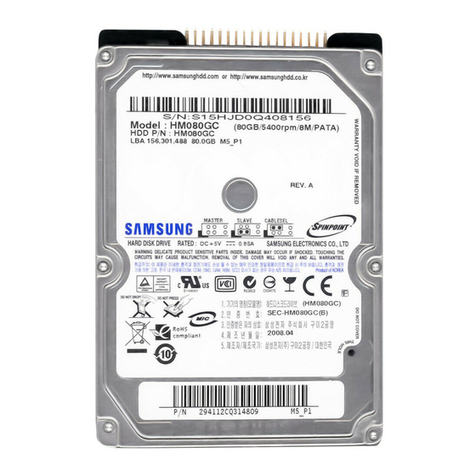
Samsung
Samsung HM160jc - Spinpoint 160 Gig 2.5 Inch Hard... user manual
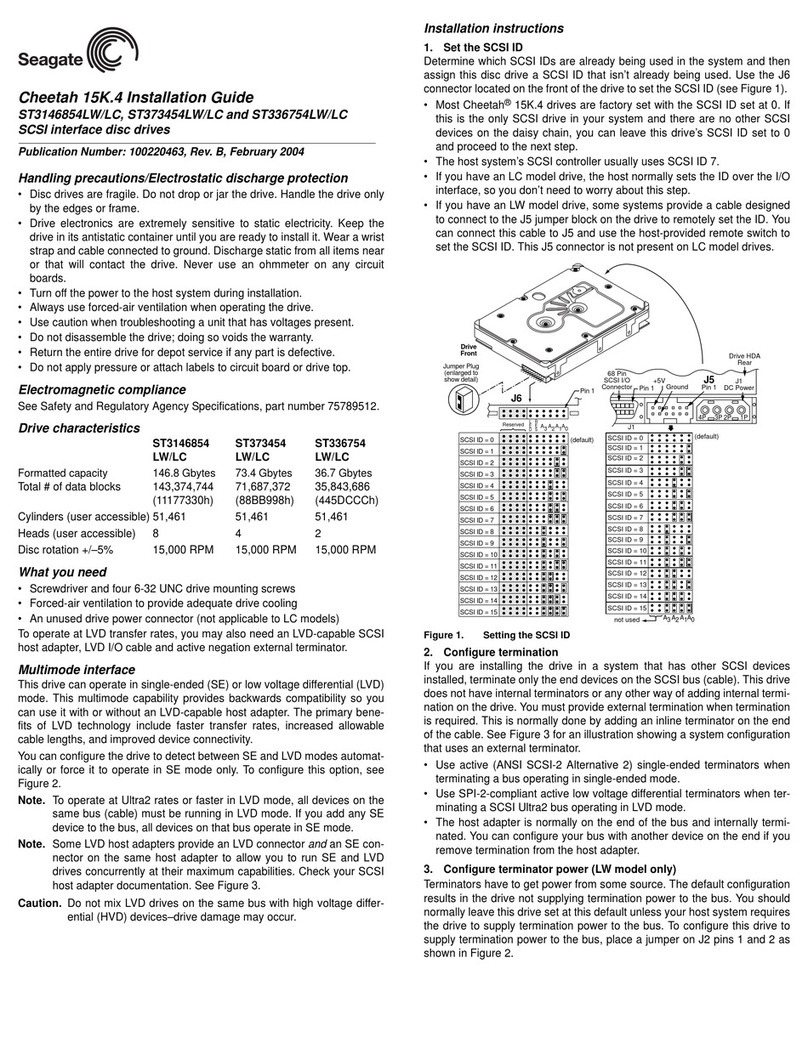
Seagate
Seagate 15K.4 - Cheetah - Hard Drive installation guide
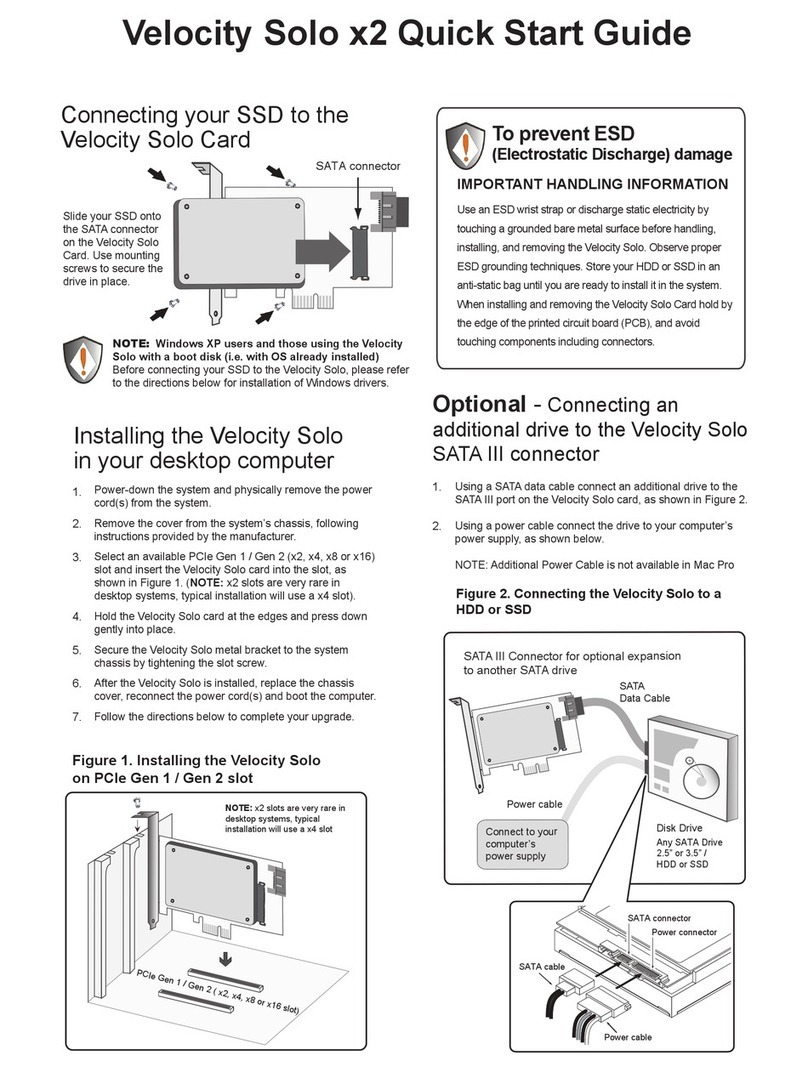
Apricorn
Apricorn Velocity Solo x2 quick start guide
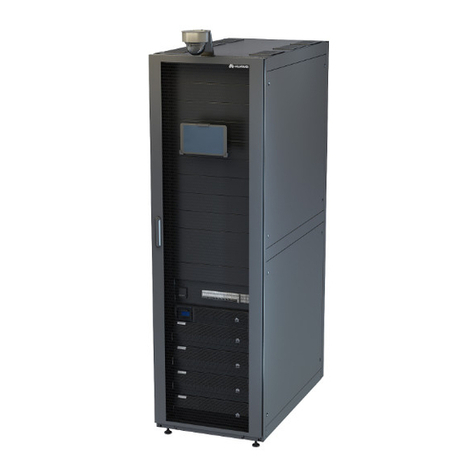
Huawei
Huawei FusionModule500 user manual
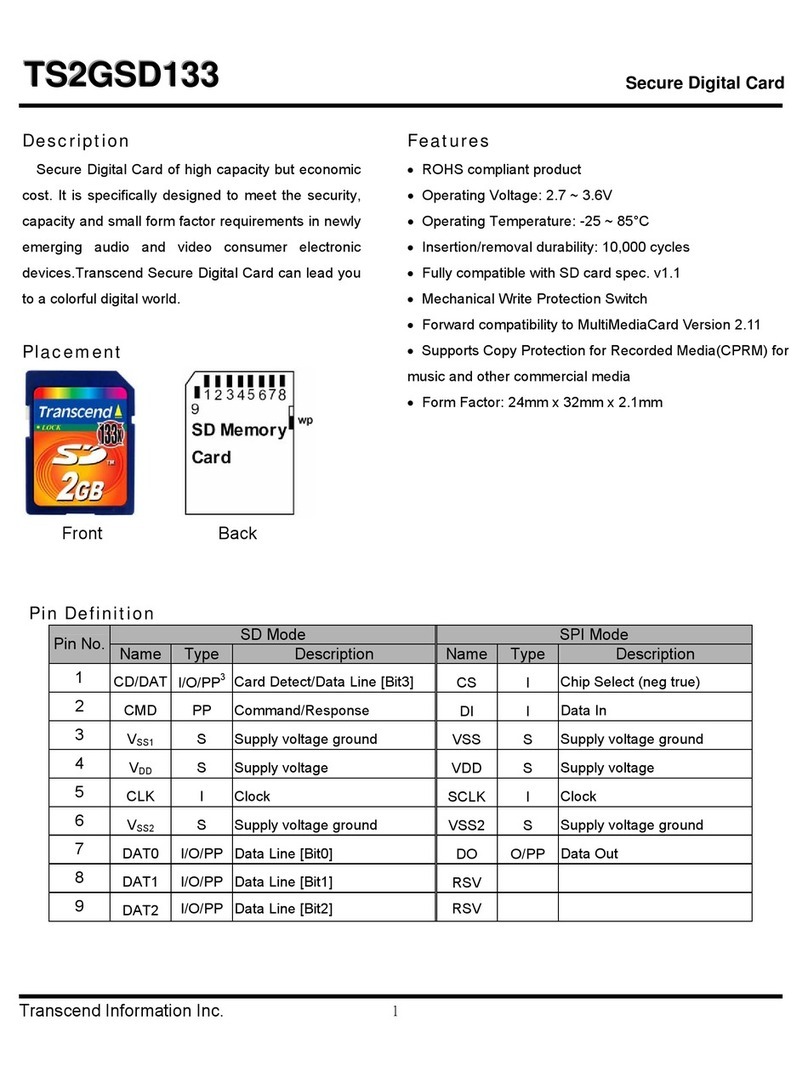
Transcend
Transcend Secure Digital Card TS2GSD133 Specification sheet

nStor
nStor NexStor 4200F Series user guide
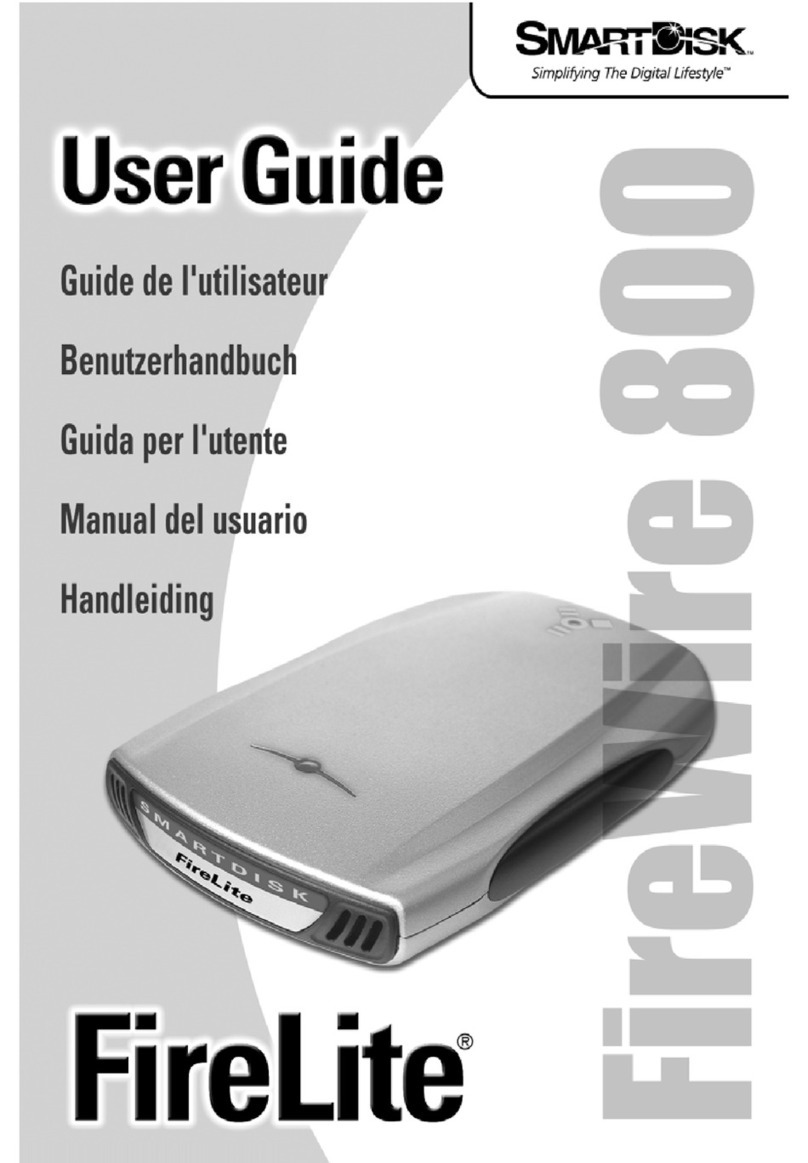
SmartDisk
SmartDisk FireLite FireWire 800 user guide

AA Products
AA Products SH-4603-GAP instruction manual
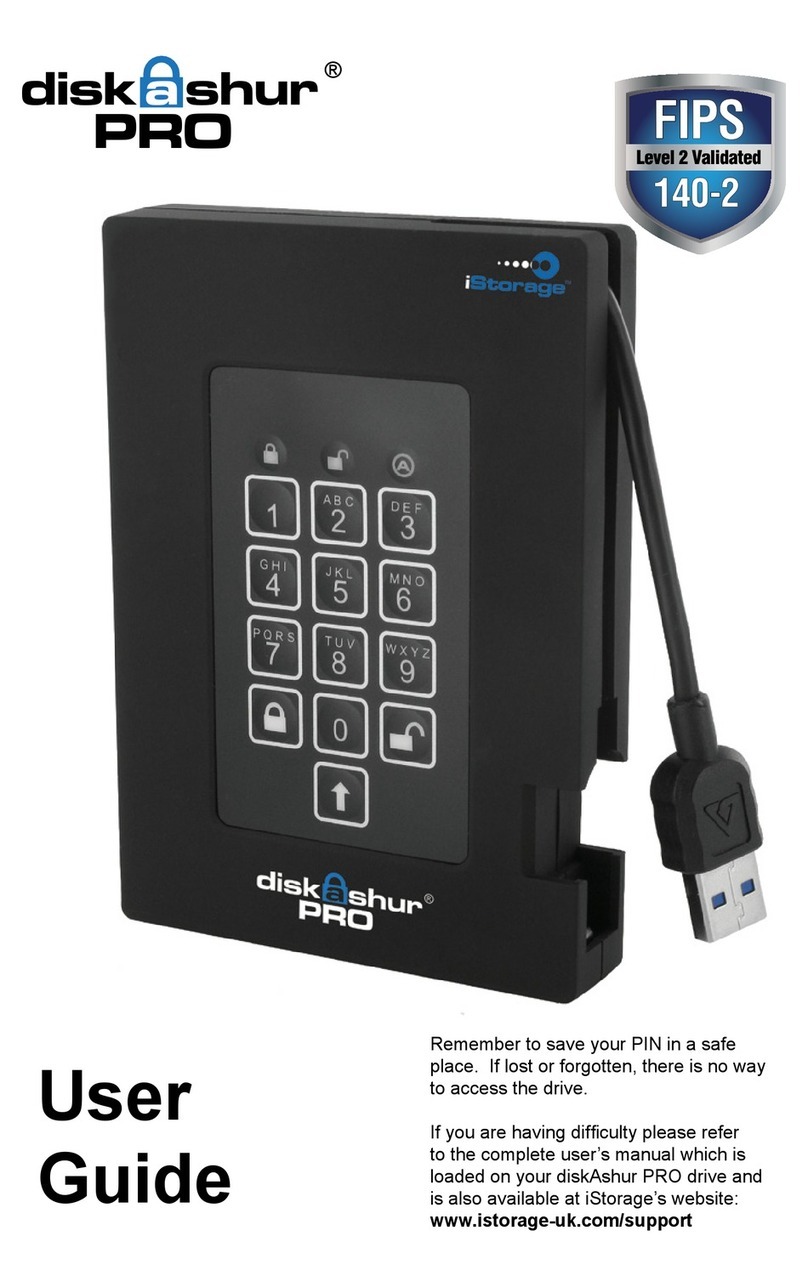
Diskashur
Diskashur iStorage user guide

G-Technology
G-Technology G Drive slim brochure

Sony
Sony SDT 11000 - DDS Tape Drive user guide
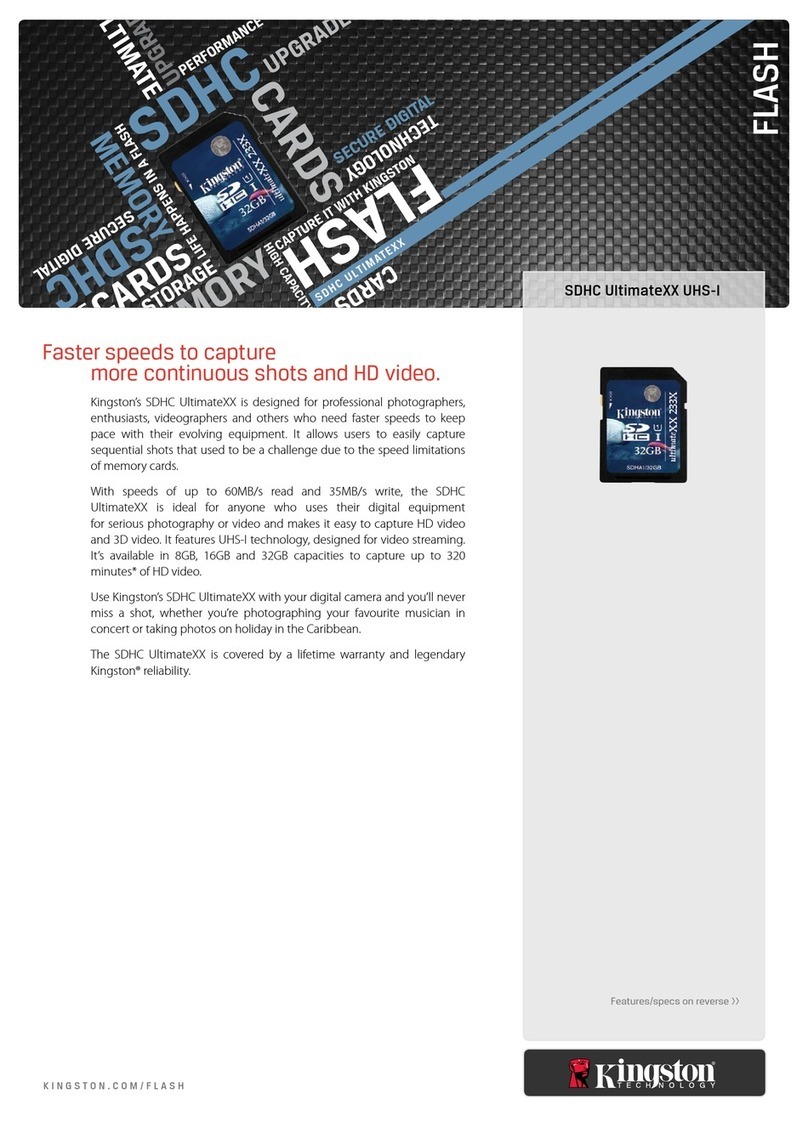
Kingston Technology
Kingston Technology SDHC UltimateXX UHS-1 Specifications
